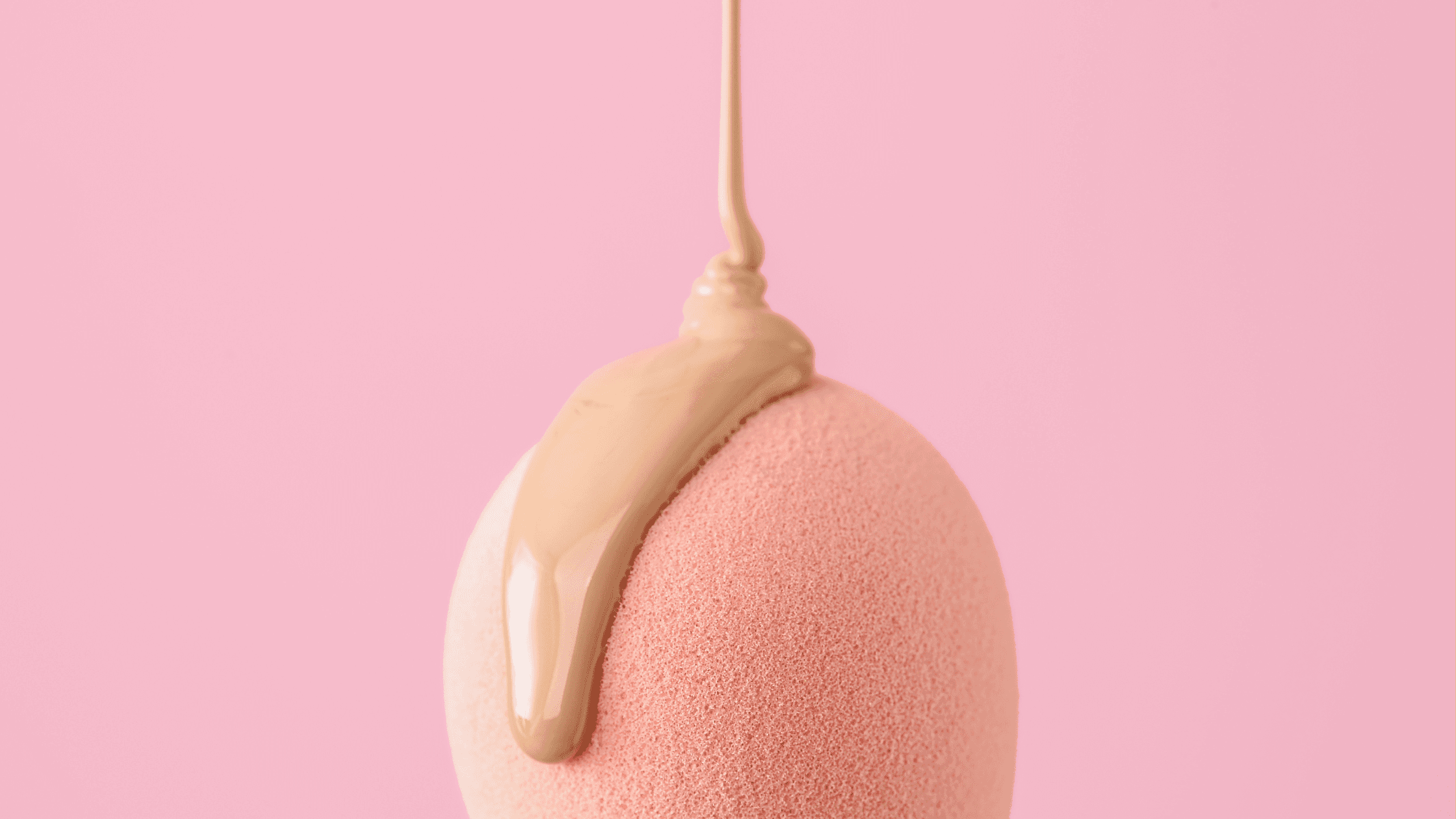
The Blioh Team
February 4, 2024
The Hidden Downsides of In-Person Cosmetic Testers
In the bustling world of cosmetics, in-person testers have long been considered a shopper's best friend. These small samples, typically found in beauty stores and department store counters, offer consumers the tantalizing opportunity to try before they buy. At first glance, they seem like a convenient and customer-friendly solution to the age-old problem of choosing the right makeup or skincare product. However, beneath their glossy exterior lies a multitude of issues that are more problematic than they appear at first blush.
From environmental concerns to hygiene risks, from hidden costs to questionable effectiveness, cosmetic testers come with a hefty price tag that extends far beyond their apparent benefits. This article delves deep into these issues, exploring why we might need to rethink our reliance on these ubiquitous product samples and consider more sustainable and effective alternatives.
The Environmental Impact: A Growing Concern
The environmental footprint of cosmetic testers is far larger than most consumers realize. These small samples, often no more than a few grams or milliliters of product, contribute significantly to pollution and waste throughout their lifecycle.
Packaging Waste: The Silent Polluter
Perhaps the most visible environmental issue associated with cosmetic testers is their packaging. The majority of these samples come in single-use plastic containers that are rarely recycled. According to a report by the Ellen MacArthur Foundation, the beauty industry produces over 120 billion units of packaging annually, much of which ends up in landfills or oceans. Cosmetic testers, with their frequent replacement cycles, contribute significantly to this waste.
For instance, consider a popular lipstick brand that offers testers for 50 shades in 1,000 stores nationwide. If these testers are replaced monthly (a conservative estimate), that amounts to 600,000 plastic lipstick tubes discarded annually – from just one product line of one brand. Multiply this across thousands of brands and products, and the scale of the problem becomes apparent.
Carbon Footprint: The Invisible Impact
The environmental cost of cosmetic testers extends beyond visible waste. The entire lifecycle of these products – from raw material extraction to manufacturing, distribution, and eventual disposal – contributes to carbon emissions.
For example, many cosmetic ingredients are sourced globally. A single tester might contain palm oil from Indonesia, mica from India, and packaging materials from China, all of which are then assembled in another country before being shipped to stores worldwide. This complex supply chain results in a significant carbon footprint for each tiny tester.
Moreover, the frequent replacement of testers means this energy-intensive cycle is repeated far more often than necessary. A study by the British Beauty Council estimated that the beauty industry's global carbon footprint is equivalent to that of a small country, with product samples and testers playing a non-trivial role in this impact.
Hygiene Risks: The Unseen Danger
While environmental concerns might not be immediately apparent to the average shopper, the hygiene risks associated with cosmetic testers are more tangible – and potentially more alarming.
Cosmetic testers, by their very nature, are exposed to air and touched by numerous individuals throughout the day. This makes them prime breeding grounds for bacteria, fungi, and other microorganisms. A study conducted by a team at Rowan University found that 100% of the makeup testers they examined were contaminated with E. coli, Staphylococcus, and other potentially harmful bacteria.
Dr. Elizabeth Brooks, a biological sciences professor who led the study, noted, "We found staph, strep, and E. coli bacteria from fecal matter in the makeup samples we tested." This unsettling discovery highlights the hidden dangers lurking in these seemingly innocuous product samples.
The use of shared applicators in cosmetic testers presents another significant hygiene risk. Even when stores provide disposable applicators, not all customers use them correctly, and some may double-dip or use their fingers instead.
A real-life cautionary tale emerged in 2017 when a woman in California sued a major cosmetics retailer after allegedly contracting herpes from a lipstick tester. While this case is extreme, it underscores the potential health risks associated with shared cosmetic samples.
Dermatologists and makeup artists have long warned against using public makeup testers, especially for products applied near the eyes or mouth. Dr. Whitney Bowe, a renowned dermatologist, advises, "I never ever recommend testing makeup in stores. The amount of bacteria, viruses, and fungi that can grow on these products is staggering."
Cost Concerns: The Price of "Free" Samples
While cosmetic testers might seem like a free perk for shoppers, their cost is ultimately factored into the price of the products we buy. This hidden expense affects both retailers and consumers.
Stores must frequently replace testers to maintain hygiene standards and product appearance. This constant turnover represents a significant ongoing expense for retailers.
For example, a mid-sized beauty store might stock testers for 1,000 different products. If each tester costs an average of $5 to replace (a conservative estimate for many high-end brands), and they're replaced monthly, that's a $60,000 annual expense for testers alone. Larger chains with hundreds or thousands of locations face exponentially higher costs.
Higher Prices for Consumers: The Trickle-Down Effect
The cost of maintaining these testers often leads to higher prices for the actual products, making cosmetics more expensive for all shoppers – even those who don't use the testers.
Industry insiders estimate that the cost of testers and samples can account for up to 5% of a product's retail price. For a $30 foundation, that's $1.50 per bottle going towards the cost of testers. While this might seem small, it adds up quickly across an entire makeup collection.
Ineffectiveness: The Illusion of Informed Choice
Despite being the go-to method for trying cosmetics, in-person testers often fail to provide accurate or useful information to consumers.
Misleading Results: The Tester Trap
Due to exposure to air, light, and varying temperatures, testers can change in color and texture over time. This means they might not give a true representation of the product a customer would actually receive.
Makeup artist Bobbi Brown notes, "Testers in stores can oxidize and change color when exposed to air. The foundation you test on your hand might look completely different when you open a fresh bottle at home."
This discrepancy can lead to dissatisfaction and wasted purchases. A survey by beauty retailer Lookfantastic found that 72% of respondents had bought a foundation that didn't match their skin tone after testing it in-store, highlighting the unreliability of these samples.
Limited Options: One Size Doesn't Fit All
Testers usually offer a limited range of shades and types, which often fail to meet the diverse needs of all customers. This is particularly problematic for consumers with darker skin tones or specific skin concerns, who may find that the available testers don't accurately represent the full product range.
Fenty Beauty, launched by Rihanna in 2017, demonstrated the importance of inclusivity by offering 40 foundation shades from the start. However, many stores struggle to provide testers for such extensive ranges, leaving customers to guess which shade might work best for them.
Alternative Solutions: A Path Forward
Given the numerous issues associated with traditional cosmetic testers, the beauty industry is beginning to explore alternative solutions that address these concerns while still allowing customers to make informed purchasing decisions.
Virtual Try-On Technology: The Digital Revolution
Augmented reality (AR) and artificial intelligence (AI) are revolutionizing the way consumers can test makeup virtually. Apps like L'Oréal's Makeup Genius, Sephora's Virtual Artist, and Blioh allow users to "try on" different makeup looks using their smartphone cameras, eliminating the need for physical testers entirely.
These technologies not only solve hygiene and environmental concerns but also offer greater convenience and a wider range of options. For example, Perfect Corp's app has partnered with over 200 beauty brands, allowing users to virtually try thousands of products from the comfort of their homes.
Sample-Size Products: A Safer Alternative
Some brands are moving towards providing sealed, single-use samples or mini versions of their products. While this approach doesn't entirely solve the environmental concerns, it significantly reduces hygiene risks and provides a more accurate representation of the product.
Brands like Smashbox and Tarte have introduced "try-me" sizes of their most popular products, allowing customers to test them at home before committing to a full-size purchase.
Personalized Consultations: The Human Touch
Many beauty retailers are shifting towards offering personalized consultations with trained beauty advisors. These experts can guide customers towards suitable products based on their skin type, concerns, and preferences, often using tools like skin analysis devices to provide tailored recommendations.
For instance, Nordstrom's Beauty Stylists offer free, personalized beauty consultations, helping customers navigate the vast array of products without relying heavily on open testers.
The Road Ahead: Rethinking Beauty Retail
As we've explored, in-person cosmetic testers come with a host of issues: they harm the environment, pose significant hygiene risks, incur hidden costs, and often fail to provide accurate product information. The beauty industry must grapple with these challenges and move towards more sustainable, hygienic, and effective alternatives.
This shift is not just about changing how we test cosmetics; it's about reimagining the entire beauty shopping experience. It requires a delicate balance between meeting consumers' desire to try products before purchasing and addressing the very real concerns associated with traditional testers.
As consumers become more aware of these issues, they too have a role to play. By advocating for better practices and supporting brands that prioritize sustainability and hygiene, shoppers can help drive positive change in the industry.
The future of beauty retail likely lies in a hybrid approach, combining technological innovations like AR with personalized human expertise and carefully controlled product sampling. Technologies like virtual try-on apps, like Blioh, and single-use samples are more sustainable and hygienic. This evolution promises a more sustainable, hygienic, and ultimately more satisfying shopping experience for all.
While the humble cosmetic tester has long been a staple of beauty counters worldwide, it's clear that its time may be coming to an end. As we move towards a more conscious and responsible approach to beauty, the way we discover and test new products must evolve too. The challenges are significant, but so are the opportunities for innovation and improvement in this vibrant and ever-changing industry.







